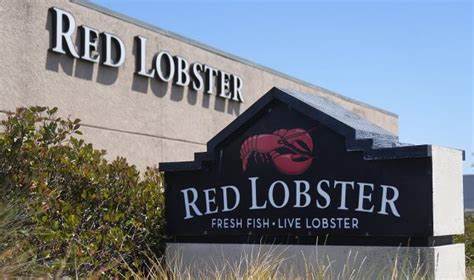The company reported over $1 billion in debt and less than $30 million in available cash. It plans to sell its business to its lenders, who will provide financing to keep it operational. Meanwhile, the company expects to continue closing restaurants.
Famous for its cheddar bay biscuits, crab legs, and shrimp dishes, Red Lobster expanded across the United States during the 1980s and 1990s. In 2016, a mention in Beyoncé’s song “Formation” led to a surge in sales.
With 578 locations across 44 states and Canada, Red Lobster serves 64 million customers annually, generating $2 billion in sales. The chain purchases one in five lobster tails sold in North America.
However, analysts and former employees cite recent mismanagement, competition, and inflation as contributing factors to Red Lobster’s decline.
Years of underinvestment in marketing, food quality, service, and restaurant upgrades weakened the chain’s ability to compete with fast-casual and quick-service restaurants.
Red Lobster was founded in 1968 by Bill Darden, a key figure in the casual dining sector. General Mills soon acquired the restaurant, and it later became part of Darden Restaurants, owner of Olive Garden and other chains.
In 2014, Darden sold Red Lobster to private equity firm Golden Gate Capital for $2.1 billion. Since 2020, Thai Union Group, a seafood distributor based in Thailand, has been the largest shareholder, owning 49% of the company.
Red Lobster has struggled under Thai Union’s ownership. Customer visits have dropped 30% since 2019 and have only slightly improved since the pandemic. Earlier this year, Thai Union announced plans to divest from Red Lobster, taking a $530 million loss.
Former employees say Thai Union’s cost-cutting measures and strategic errors harmed the chain.
“Thai Union forced huge cost reductions, including many that were penny-wise and pound-foolish because they hurt sales,” said a former executive who spoke anonymously due to a non-disclosure agreement. Thai Union did not respond to requests for comment.
The company experienced significant executive turnover under Thai Union’s management, with five CEOs since 2021. In 2021 and 2022, Red Lobster appointed a new CEO, chief marketing officer, chief financial officer, and chief information officer, all of whom left within two years.
Last summer, under Thai Union, Red Lobster made its $20 endless shrimp a permanent menu item instead of a limited-time offer. The change cost the company $11 million and impacted Thai Union’s profits.
In its bankruptcy filing, Red Lobster said it is investigating the circumstances of that promotion, which management opposed.
“We need to be much more careful,” Thai Union CFO Ludovic Garnier said on an earnings call in November 2023.
The filing also blamed Thai Union for the losses, noting that under the guise of a “quality review,” Red Lobster eliminated two breaded shrimp suppliers, leaving Thai Union with an exclusive deal. This led to higher costs and did not align with the company’s typical decision-making process for selecting suppliers based on demand.
The rise of fast-casual chains like Chipotle and quick-service chains like Chick-fil-A over the past two decades also pressured Red Lobster. Casual dining’s share of total restaurant industry sales has declined from 36% in 2013 to 31% in 2023, according to Technomic.
In its bankruptcy filing, Red Lobster admitted it had “a bloated and underperforming restaurant footprint” and cited economic challenges and increased competition for its financial troubles.
Red Lobster had been signaling its bankruptcy for months. In January, the company hired restructuring expert Jonathan Tibus to assess its business and named him CEO in March. Last week, it began closing 93 restaurants in preparation for bankruptcy.
As it ran out of cash, the company stopped paying its vendors last year.
To stay afloat, Red Lobster plans to secure a $100 million financing agreement, according to its bankruptcy petition.







